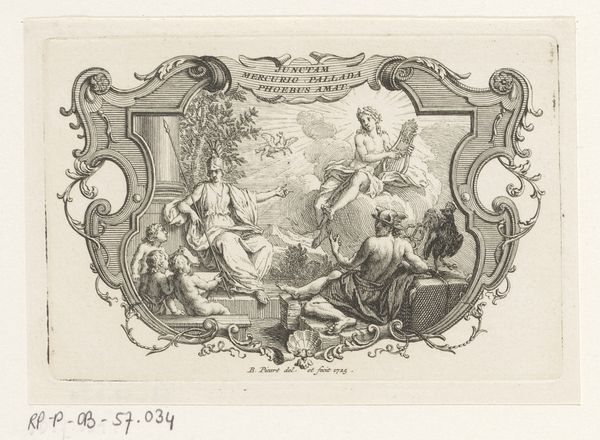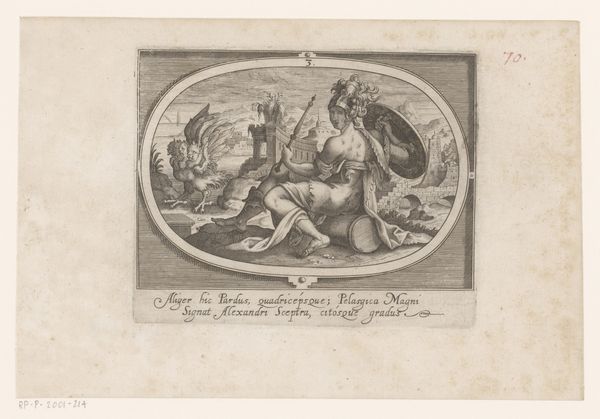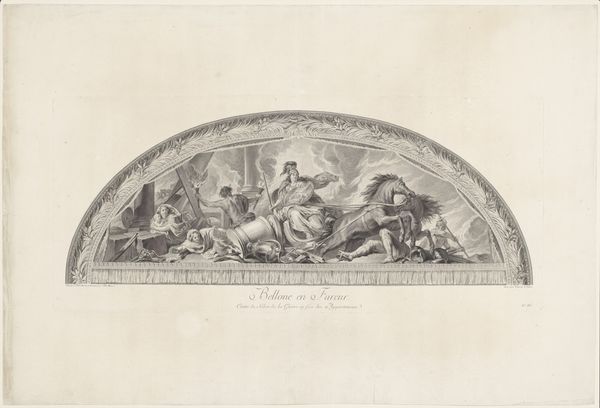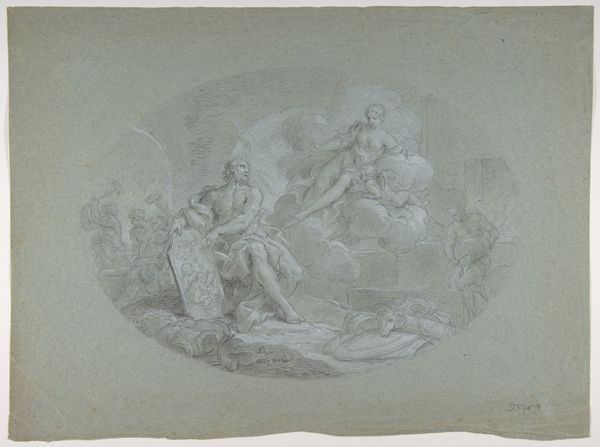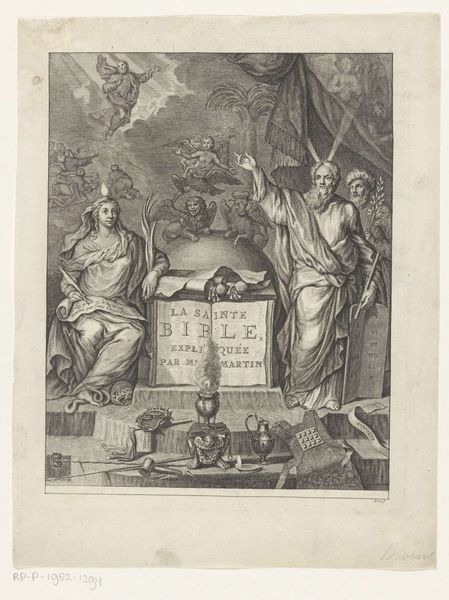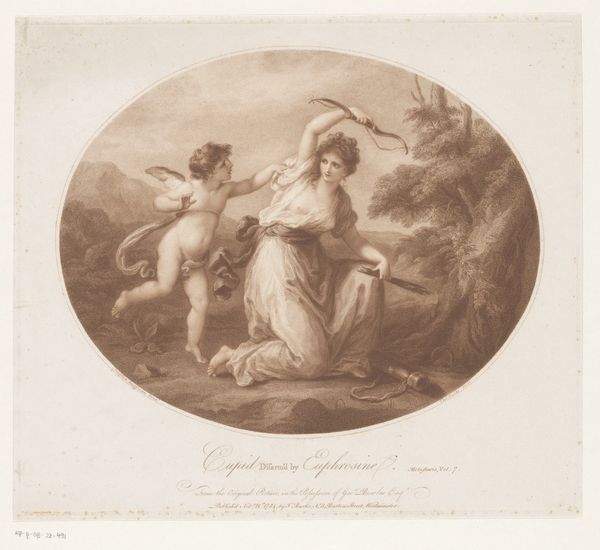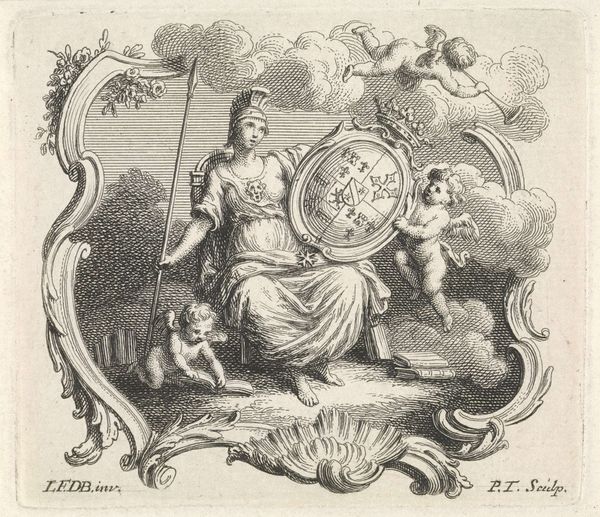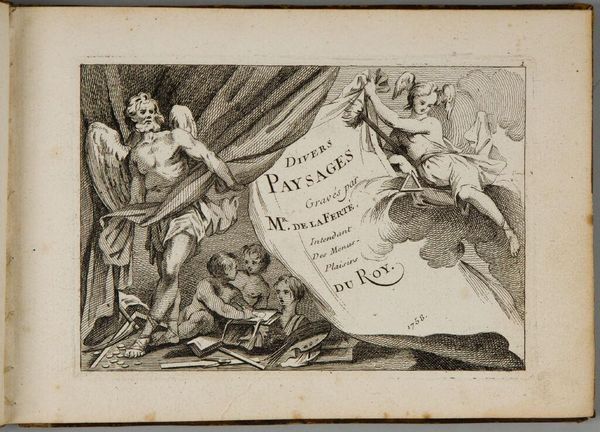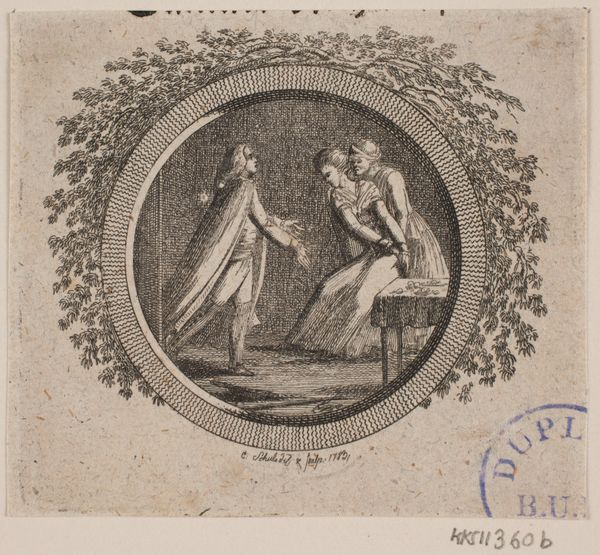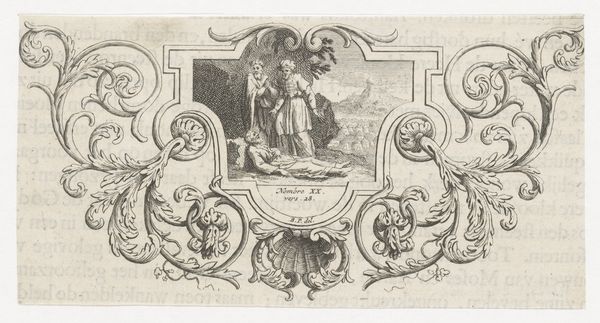
drawing, print, engraving
#
drawing
#
allegory
#
neoclassicism
# print
#
figuration
#
engraving
Dimensions: Sheet: 3 9/16 × 5 1/8 in. (9 × 13 cm) Plate: 3 1/8 × 4 5/8 in. (8 × 11.8 cm)
Copyright: Public Domain
Curator: Today, we're looking at a trade card for William Sharp, engraver, dating from sometime between 1800 and 1900, currently held in the collection of the Metropolitan Museum of Art. Editor: My initial reaction is that this engraving has a stately, almost ethereal quality. The figures seem to float, contributing to the impression of elegance and artistry. Curator: Indeed, the piece adheres to neoclassical conventions. Notice the symmetry and balance of the composition—the idealized figures flanking the central cartouche create a harmonious arrangement. Furthermore, the materiality—the precise lines of the engraving—speak to a careful technical process. Editor: The two allegorical figures particularly catch my eye. One holds a scroll labeled "History", while the other bears one with "Beautys Rec." What significance would these have in promoting Sharp’s engraving business? Curator: Ah, a fine observation! "History" suggests the enduring nature of engraved images and their power to document and preserve. "Beautys Rec." refers to the recording of beauty, that engraving can capture ephemeral moments. In concert, they signify Sharp's craft as both timeless and capable of idealizing form. The overall design is intended to elevate the engraver to the status of a scholarly artisan. Editor: It’s also interesting that the figures themselves resemble classical depictions of muses, associating Sharp's engraving not just with commerce, but also with the fine arts. This layering of meaning creates a complex cultural message. Curator: Absolutely. The oval format is worth noting too. The subtle curve repeats itself formally and conceptually, enhancing the overall reading experience, framing and setting off the elements within the composition, directing our eye from form to text. Editor: After this discussion, I understand the artwork's intention to associate commerce and art through symbolic figures and a refined visual design. Curator: Precisely, a blend that reflects the era’s shifting ideas concerning craftsmanship and artistry.
Comments
No comments
Be the first to comment and join the conversation on the ultimate creative platform.

